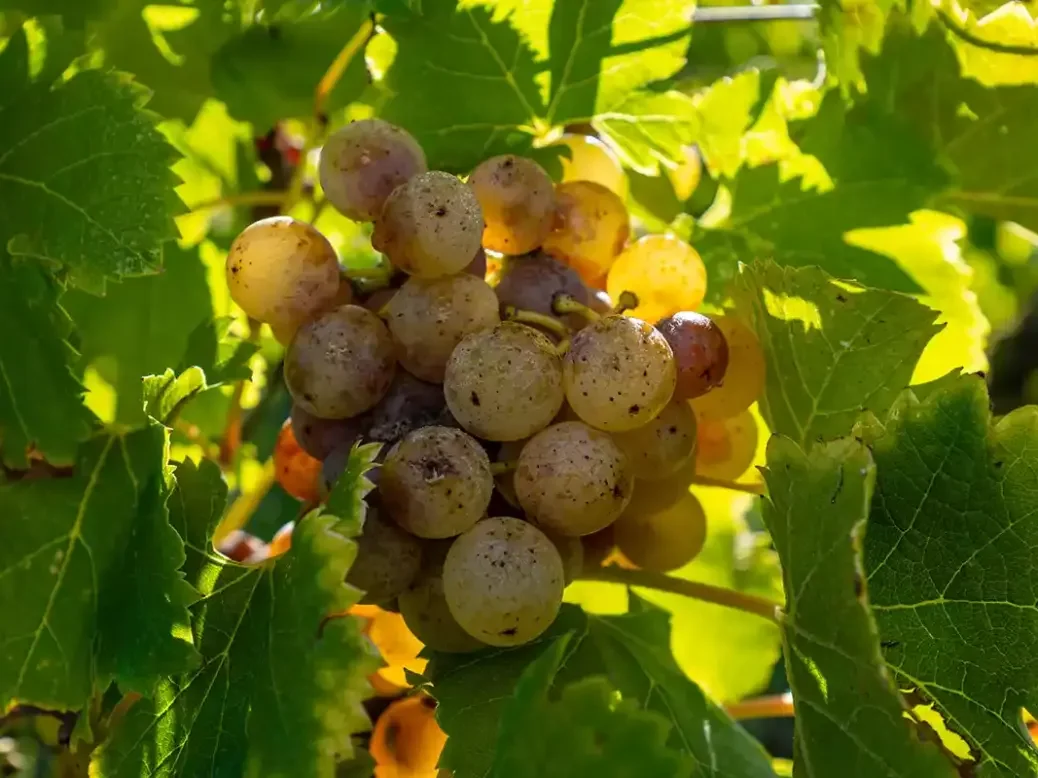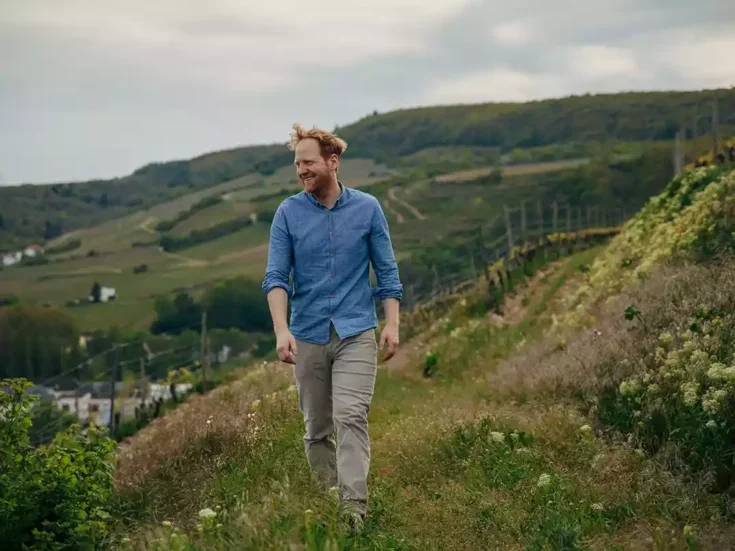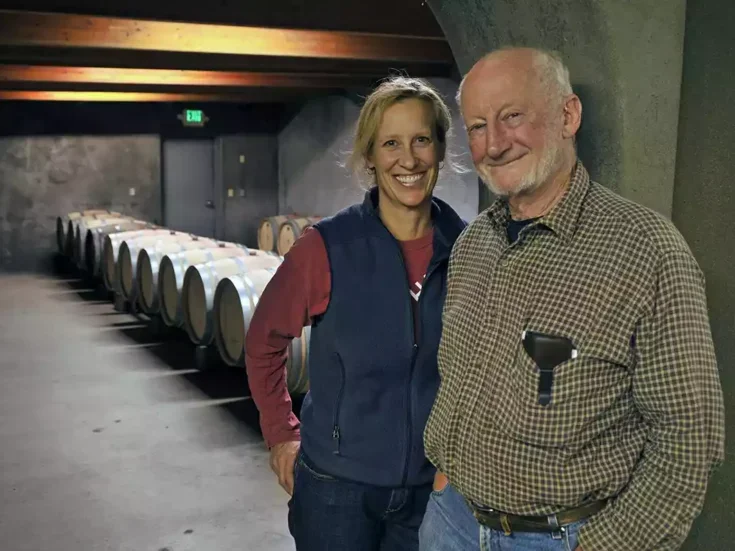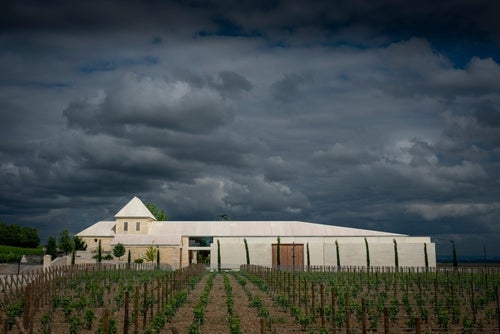
2023 Bordeaux tasting notes: Left Bank Part I
2023 Bordeaux tasting notes: Left Bank Part II
2023 Bordeaux tasting notes: Right Bank Part I
2023 Bordeaux tasting notes: Right Bank Part II
SAUTERNES & BARSAC
Château Climens 1er Cru (100% Sm; 130g/l RS)
SF | An outstanding effort from Frédéric Nivelle, building on the undoubted quality of the 2022, and fashioning a definitive Barsac—the definitive Barsac, one might say. He compares it to the excellent 2014. Limestone terroir, old-vine Semillon, biodynamic viticulture, and an aging in 80% new barrels (the balance is aged in the wine globes)—all the elements conspire to make a very fine piece of work: orange peel and beeswax, wild honey and dried apricot. Less sweet than the ’22, but possibly more persuasive, its seam of acidity by turns eloquent and resilient. An aspirational estate, under (relatively) new ownership and certainly not lacking for ambition when it comes to pricing. There need be no fear, however, when it comes to the quality of the wine. | 96–97
Château Climens Lilium (100% Sm)
SF | Climens has cultivated three dry white wines; this is the most gilded lily, but there are also Asphodèle and the Petit Lily. The trio aspire to be the definitive statement in pure-Semillon dry white wine from Sauternes, still languishing under the generic AOC Bordeaux umbrella. The simplicity of message is intended to underline the equation between pure limestone soil and this historic variety. It is underscored by a complete absence of wood: The wine is aged in glass containers known as wine globes, having been fermented in cement. A little reduction at first, but this was soon assuaged by more reassuring slate and fossil notes, with white pepper and persimmon in support. The palate is pure, with an almost monastic austerity defining personality, but nothing harsh or drying; a lifted presence, therefore, citric and yellow fruit in support and, once again, soft spice. Intriguing, challenging, worthy of its biodynamic status and maybe even worthy of its ambitious price tag. | 94–95
2023 Bordeaux Field Notes: Out of sorts?
Château Coutet 1er Cru (95% Sm, 4% SB, 1% Mus; 140g/l RS)
SF | Aged for 18 months in barrel, and the child of four separate tris (the key, third outing taking place on and after October 2), this is a triumphant Coutet, every bit as good as the 2014, according to cellar master Laurier Giradot. The juxtaposition of high acidity (tartaric acid is only degraded when the temperature goes over 95˚F [35˚C]) and perfect botrytic conditions—perfect balance, in other words. A classic Barsac nose of limes, quince, meringue, and flint; thereafter, the sweetness lends barley sugar and a hint of truffle. Poised and balanced. A magnificent Barsac. | 96–97
Opalie (74% SB, 26% Sm)
SF | A classy offering, as one would expect from this superlative address. Dry white wine makes up just over 10% of Coutet’s production, significantly less, therefore, than many of its neighbors. Aromas of spring flowers and lemon posset, almond essence, and wet stone. The Sauvignon exuberance lifts the ensemble, but is grounded, up to a point, by the dry extract of the Semillon, with flint and almond evidenced. A broad gentle palate, its acidity poised and nourishing. Good mid-term aging potential, with plenty of gastronomic inclination. | 92–93
2023 Bordeaux Field notes: Single spies
Doisy du Broca 2ème Cru (90% Sm, 10% SB)
SF | Less known than either Daëne or Védrines, but making up one of the classified growths, du Broca was brought back into the Dubourdieu fold in 2014. Extensive replanting ensued, with the 2019 vintage hosting the relaunch. Given the youth of the vines, this is an impressive effort, with notes of sour quince and exotic fruit harmonious and suitably tense. | 92–93
Château Doisy-Daëne 2ème Cru (90% Sm, 10% SB; 160g/l RS)
SF | 2024 marks the completion of 100 years of Dubourdieu ownership, and its release, the 2023, is worthy indeed: sophisticated, elegant, and pure, but also generous and mouth-coating. A velvety sponge-cake texture is supported by gingerbread and malt, with amplitude and tension entwined. | 94–95
Château Doisy-Daëne L’Extravagant (100% SB; 220g/l RS)
SF | Three barrels of the very best Sauvignon Blanc make up this well-named cuvée—its raison d’être, according to Dubourdieu, the recapturing of the spirit of 1855, when Sauvignon Blanc dominated the sweet wines. Today, 80% of the plantings are Semillon, which is perceived as more reliable when it comes to botrytic infection. Even with an appropriately extravagant residual-sugar quota, there is still excellent balance here and a long, linear structure that is endlessly evocative. | 94–95
Doisy-Daëne Blanc (100% SB)
SF | If Reynon demonstrates the character of 100% Sauvignon Blanc on clay, the dry Doisy-Daëne does the same thing for limestone, only this time with 20% new barrels thrown in. The dry white here is far from new, having been initiated by Jean-Jacques Dubourdieu’s grandfather in 1948. A pleasing floral aromatic, with hints of butterscotch and ground almond, then a lively lifted palate, with plenty of crunchy orchard fruit and an opulent finish. | 91–92
2023 Bordeaux Field notes: Château Lafleur—La Balançoire
Château Doisy-Védrines 2ème Cru (80% Sm, 20% SB; 140g/l RS)
SF | Pale gold. Pineapple and quince, nectarine, and spice. Pleasant Barsac restraint, grippy acidity, and a refreshing finish. Less intense than its peers, even from Barsac, but very composed and complete. | 93–94
Château de Fargues (85% Sm, 15% SB; 142g/l RS)
SF | A relatively pale color; suede, buckwheat perhaps. The nose marries grape skin, crystallized fruit, tarte tatin, and hints of nougat. Cerebral, almost despite itself, with hints of lanolin and dried apricot rather than more exotic fruit, for all the generosity of the year and for all, as it turns out, the residual sugar. François Amiraut maintains that the 142g/l pretty much hits the ceiling of acceptability at Fargues (clearly not elsewhere), such is his desire to ensure that the sweetness does not overwhelm the ensemble. There is scant danger of that here; flowers and orchard fruits take precedence over more tropical pointers, and there is only a modest taste of honey. For all that, this is more structured and assertive than many of its predecessors and thereby shows off how best to share the generous gifts bestowed by 2023. | 95–96
Château Guiraud 1er Cru (65% Sm, 35% SB; 160g/l RS)
SF | Rich old gold, with green flecks. A chewy, oaky mid-palate, very sweet but with sufficient matière to resolve and to offer a complete, satisfying tableau of botrytic fruit. An indulgent style, as ever, with waxy, layered Semillon to the fore; maybe well suited to a less indulgent vintage. | 94–95
Château Lafaurie-Peyraguey 1er Cru (100% Sm; 185g/l RS)
SF | Simon Deleporte’s second vintage may be a little less controversial than the first (remember 2022’s somewhat outlandish 225g/l of RS), but it certainly maintains the stylistic momentum, even if only notching up 185g/l of sugar. Faithful to the 1855 delimitation, the wine is now 100% Semillon; deep amber in color, with an expressive nose of beeswax, dried apricot, and toffee apple. The palate is no less indulgent, redemptive acidity once again holding it together, with hints of bitter orange and lavender adding further interest. Not for everyone, but those who loved 2022, a robust coterie, will not be disappointed with the 2023. | 94–95
2023 Bordeaux Field notes: The endless appeal of Sauternes
Château Lafaurie-Peyraguey Grand Vin Sec (60% SB, 40% Sm)
SF | The gravel soils resemble Pessac, as does the style, which is powerful, ripe, and expressive. Leafy notes allied to iodine, fennel, and agrume, then petrichor, gunflint, and late-season yellow plums, with salinity at the end. Fermented in 500-liter vessels and then matured in more typical barriques, of which 20% are new, this wine does not abjure the flamboyant house style, and nor does it undermine textural harmony. Only 4,700 bottles made. | 91–92
Château Rayne Vigneau 1er Cru (70% Sm, 30% SB; 146g/l RS)
SF | Generous color; suede, amber almost. Characteristic Rayne gingerbread and sour honey on the nose, then a palate that is both exotic and nutty, with hints of toffee apple, pineapple, and white chocolate, then a firm, malty grip, with ginger once again in the ascendent. A muscular and assertive style, Rubenesque in shape and almost, but not quite, overwhelmed by its own amplitude. Only 2023’s now famous levels of acidity hold everything in place. The crop yielded only 7hl/ha, which was low for 2023. | 94–95
Château Suduiraut 1er Cru (100% Sm; 150g/l RS)
SF | An outstanding Suduiraut from Pierre Montégut, clearly not taking his eye off the ball after his promotion to additional (red) winemaking duties at Château Pichon Baron. Most of the harvest was picked at speed October 2–11, after ideal botrytic onset following late September rain. Dense, rich, and generous, with a distinct botrytis character and beautiful aromatic of quince and honey, a focused seam of acidity, and impressive concentration. Not too heavy, however, its 150g/l of residual sugar worn with ease and failing to compromise a finish that is uplifting in both senses of the word. | 96–97
Château Suduiraut Pur Semillon (100% Sm)
SF | A good Semillon year for both the dry and the sweet wines, it seems. The distinctive nose of fennel, quince, and lanolin vying with the more usual descriptors of agrume and stone fruit. On the palate, there is a charming note of mandarin, then hazelnut and finally a whisper of vanillin, courtesy of the 34% new barrels. The texture is rich, but it does not cloy. Pure in every sense. | 94–95
Château Suduiraut Vieilles Vignes (57% Sm, 43% SB)
SF | Pierre Montégut’s love of Semillon is already felt in the blend; its pithy, slightly waxy texture providing a textural and gustatory foil to the more open, more linear citric notes of the Sauvignon Blanc. Only 12% new barrels; these inform but do not impose on the structure, which has a pleasing lift. | 93–94
Château La Tour Blanche 1er Cru (80% Sm, 18% SB, 2% Mus; 130g/l RS)
SF | Deep gold, more so than usual maybe. The palate appears equally intense… A very strident Tour Blanche, its élevage neatly entwined with its generous tropical fruit. The overall impression is positive, but maybe it could be a little more focused. | 92–93
2023 Bordeaux Field notes: La Tour Figeac—La Chartreuse de St-Emilion






